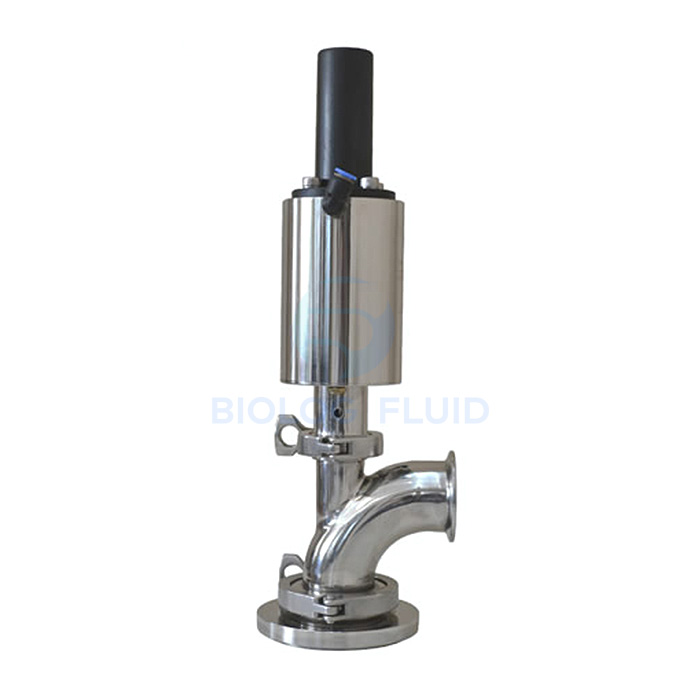Working principle of sanitary diaphragm valve
2024-07-06The working principle of a sanitary diaphragm valve is mainly based on the interaction between the valve stem and the diaphragm to achieve fluid opening and closing. The following is a detailed explanation of the working principle:
1、 Basic Structure
The sanitary diaphragm valve is mainly composed of components such as valve body, diaphragm, valve stem, and valve cover. Among them, the diaphragm, as a key component, is usually made of soft materials such as rubber or plastic, which have good sealing and corrosion resistance. The valve stem is used to control the movement of the diaphragm, thereby achieving control over the fluid pathway.
2、 Working principle
Open status:
When the valve stem is in the upper position, the upward movement of the valve stem drives the compression device (such as the valve core) connected to the diaphragm to rise.
As the valve core rises, the diaphragm is stretched upwards and bent, forming a smooth fluid channel inside the valve body. At this point, the fluid can freely pass through the valve, achieving the open state of the fluid.
Closed status:
When the valve needs to be closed, the valve stem moves from top to bottom.
The descent of the valve stem drives the valve core to bend the diaphragm downwards and tightly adhere to the valve seat or valve body weir (depending on the structural form of the valve).
The tight fit between the diaphragm and the valve seat or valve body dam blocks the fluid channel, thereby achieving a closed state of the fluid.
3、 Operation method
There are various operating methods for sanitary diaphragm valves, including manual operation, pneumatic operation, and intelligent controller control. Manual operation usually achieves the up and down movement of the valve stem through a handle; Pneumatic operation uses pneumatic devices to drive the valve stem movement; And intelligent controller control can achieve remote control and automated operation of valves.
4、 Characteristics and advantages
Simple structure: The sanitary diaphragm valve consists of a few main components, with a compact structure and easy maintenance.
Good sealing performance: The diaphragm made of soft material has good sealing performance, which can ensure that the fluid does not leak in the closed state.
Flexible operation: The opening and closing of the valve is flexible and convenient, and the fluid path can be quickly adjusted according to needs.
Wide applicability: Sanitary diaphragm valves are suitable for various media and working conditions, especially for ultra pure media, corrosive media, solid and easily contaminated inert media, etc.


In summary, sanitary diaphragm valves achieve fluid opening and closing through the interaction between the valve stem and diaphragm, and have the characteristics of simple structure, good sealing, flexible operation, and wide applicability.

